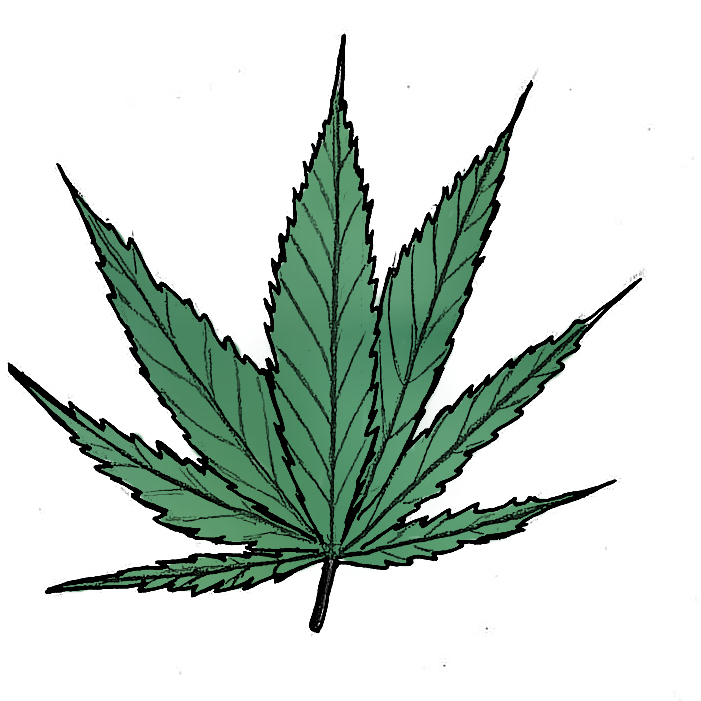One of Justin Trudeau’s flashiest policies has been his promise to legalize marijuana. Taking advantage of 4/20 this past April, his government announced that it will be instated in the spring of 2017—only one year later. We’re halfway through that time, and his policy remains vague and shallow.
Trudeau is waiting on results from the Task Force on Cannabis Legalization and Regulation, but the lack of information this close to its proposed implementation is unsettling. One of the most glaring gaps is that the Liberal government’s website doesn’t explain how it plans to keep the drug out of the hands of youth—it offers no details, and only asks for a signature in support. When discussing how legalization should be accomplished, Trudeau must clarify how he intends to protect youth from excessive marijuana use and be committed to educating them on the adverse health effects and safety risks.
Marijuana has been condemned since the days of Reefer Madness and Harry J. Anslinger, the first commissioner of the US Federal Bureau of Narcotics, who claimed that marijuana was “a short cut to the insane asylum” in the 1930s. These tactics were undoubtedly excessive and uninformed, and may have led to the general distrust of anti-drug data. However, there is increasingly concerning evidence of the negative effects marijuana can have on young people, and Trudeau’s motion thus far seems to do nothing to help prevent these negative effects.
Marijuana use can have severely damaging effects on brain development beyond teenage years. Researchers from the University of Missouri and the University of Kansas Medical Centre found that marijuana users overall are more likely to be hospitalized for stroke than non-users. Significantly, the risk of stroke increases by 126 per cent for users aged 25-34—the greatest for any age group. Strokes are usually only a risk for those over 55—not those under age 34. This threat more than doubles the risk within a population that should otherwise be relatively unaffected. Furthermore, according to a study published in The Schizophrenia Bulletin, early marijuana usage can be damaging to the quality of life of those predisposed to psychosis. Cannabis use before the age of 15, the frequency of use, and the potency of the drug can cause the first symptoms of psychosis to appear up to six years earlier than they would have in non-users, setting in as early as mid-20s. These are crucial years in which those predisposed to psychosis can develop strong support systems or career skills to be better prepared for this onset. Ensuring that youth at risk don’t smoke marijuana is essential to preserving those years.
The potential legalization of marijuana also poses significant risks for youth in terms of car accidents. The US Centers for Disease Control and Prevention found that motor vehicle fatalities were the highest cause of accident deaths among teenagers between 1999 and 2006, making it vital to account for any increased risk to do with marijuana use. While the risks associated with driving under the influence of marijuana don’t seem to be as great as with alcohol, those who drive while high have trouble staying in their lane and exhibit slower reaction times than sober drivers. In the year after marijuana was legalized in Washington, fatal car crashes among drivers who had marijuana in their system were reported to have doubled. Although this link does not necessarily imply causation, the fact remains that drivers testing positive for THC in their system did increase in that year. It is imperative to better understand these effects before legalizing marijuana and to develop an efficient method of testing for it.
If able-minded, healthy adults want to smoke safely in their own homes, that’s a choice they should be able to make for themselves. But, this is not the population that matters when it comes to the risks marijuana poses. Considering that the Liberal government claims that our current prohibition does not help youth, its lack of a clear plan to deal with this problem is disturbing. One of the biggest perceived advantages of legalization is that it will provide safer access to marijuana for those that want it, but young users below the legal age will still be left to find it in unsafe ways. Even if it’s not a deciding factor, the significant health and safety risks facing youth need to be a greater part of the conversation before the policy’s implementation. Trudeau’s policy, from the little information provided, seems to be hopping on the bandwagon without any plan to deal with the biggest problems the country currently faces.









The measures the task force will recommend to limit access to minors and educate young people about the risks of cannabis will no doubt borrow from what has worked and what has not worked with alcohol and tobacco regulations.
Currently, Canadian teens use the most cannabis in the industrialized world, they find cannabis easier to obtain than alcohol and they are about twice as likely to try cannabis than try tobacco.
Cannabis usage rates rise and fall with no statistical relationship to cannabis laws and their enforcement. We know this from comparing similar jurisdictions with differing laws and penalties, and by tracking changes after enforcement and penalties have been relaxed or ratcheted up. For example, Dutch teens use cannabis at about half the rate of Canadian teens, despite cannabis having been available for several decades to Dutch adults in “coffee shops.”
Usage rates in jurisdictions that have decriminalized cannabis have remained the same as neighbouring jurisdictions that have maintained criminal penalties, or they have gone down relative to them.
Usage rates in Colorado and Washington have remained stable since those states legalized, neither going up or down significantly. Yes, the number of fatally injured drivers who test positive for THC – indicating use within the last couple of weeks – have gone up, but no effort has been made to determine if these motorists were impaired, or even blameworthy for the accidents that killed them. Testing for THC in fatally injured motorists more than tripled in Washington following legalization, explaining the increase in positives results.
“It is imperative to better understand these [driving] effects before legalizing marijuana and to develop an efficient method of testing for it.”
Pure THC has been legally available by prescription for several decades under the brand name Marinol (dronabinol). The warning label on Marinol advises patients to avoid driving under the influence of the drug until they become accustomed to it. The same warning may be found on countless OTC medications and prescription drugs, including cold and fever remedies, analgesics, tranquilizers, sedatives, sleep-aids and anti-depressants.
The police lack a roadside screening device and legally established
blood concentration thresholds for a medicine cabinet full of impairing yet legal natural health products and drugs.
Cannabis consumers tend to overestimate their level of impairment, and either refrain from driving or attempt to compensate for perceived impairment by driving more slowly and defensively. The exact opposite is true of alcohol. Drinkers tend to underestimate their level of impairment and drive more quickly and aggressively.
The so-called “Controlled Drugs and Substances Act” prohibits the cultivation, possession, gifting and selling of cannabis, but it does not prohibit being under the influence, The CDSA does nothing to reduce the prevalence and popularity of cannabis, nor does it prevent drivers from driving while impaired by cannabis, nor aid the police in preventing impaired driving.
The good news is that driving while one’s ability to do so is impaired by any drug, licit or illicit, is prohibited apart from the CDSA. In most provinces, the police have the authority to suspend your license and impound your vehicle if they merely suspect impairment.
Further, cannabis is an economic substitute for alcohol and other psychoactive substances, with cross-price elasticities, such that when cannabis use goes up, drinking and other drug use goes down, causing a net reduction in crime, violence, unplanned pregnancies, disease, overdose deaths, domestic abuse, sexual assaults and accidents.
See “Cannabis as a substitute for alcohol and other drugs”
http://mapinc.org/url/CyFfqt6r
See also “Economic Scene: Less Marijuana, More Alcohol?”
http://www.mapinc.org/drugnews/v92/n000/a01.html
For example, opiate overdose deaths have dropped dramatically, by 25 percent on average, where cannabis has been legalized for medicinal purposes.
See “Overdoses Fell with Medical Marijuana Legalization”
http://mapinc.org/url/CH4Ki1Xn
Currently cannabis of unknown potency, purity and provenance is sold by criminals and teenagers, on commission, tax free, anytime, anywhere, to anyone of any age, no questions asked. We have more control over cat food. Despite a half century of this chaos, Canadian courts have concluded that cannabis
is “relatively harmless” compared to alcohol and tobacco and “remarkably benign.”
“Gerald Thomas, an analyst with the Centre for Addictions Research of B.C., and Chris Davis, an analyst with the Canadian Centre on Substance Abuse, used Health Canada data to chart the health and social costs of cannabis, tobacco and alcohol. Their findings: tobacco-related health costs are over $800 per user; alcohol-related health costs were $165 per user; cannabis-related health costs were $20 per user. Enforcement costs added $153 per drinker and $328 for cannabis user. In other words, 94 per cent of the cost to society of cannabis comes from keeping it illegal.”
See “Why it’s time to legalize marijuana”
http://www.macleans.ca/news/canada/why-its-time-to-legalize-marijuana/
The social costs of cannabis will go down under legal regulation. In addition to hampering research, criminal prohibition competes and interferes with the other “pillars” of drug control; education, treatment and harm reduction. Prohibition retards the evolution of social customs and mores than prevent responsible use from becoming abuse. Prohibition drives a wedge between parents and their children, teachers and students, doctors and patients and the police and their communities.
Cannabis prohibition does not protect youth. Adults who wish to obtain cannabis would be well-advised to seek out an adolescent relative or acquaintance. Legalization does not pose a significant risk to youth, and cannabis is no where near “one the biggest problems the country currently faces.” Maybe you are thinking of oxycotin, fentanyl or Paxil.
Well said.
Many bad assumptions in this article. First, legalization doesn’t mean increased use which the author assumes. Second, legalization means safer cannabis, as legal product should have no pesticides or harmful additives. Third, cannabis is much safer than alcohol, and studies show when cannabis is legal, less people drink booze, meaning they are able to make a safer choice. Fourth, the author ignores the very real harms caused by prohibition. Arrests, jail time and criminal records all have very real negative consequences.
Many problems with this article.
Lets start with the title – which claims that “Marijuana legalization poses significant risks for youth.:
This is a very large claim, which the author does not even remotely cover or address in her piece. I am not sure if the editors re-titled this article, but the title is irrelevant to what she wrote/argued. The author never even addresses any evidence of legalization being a risk for youth, which MUST be compared to the current state of affairs – or must look at other examples of when legalization of cannabis suggested increases in risks to youth.
Legalization will hopefully do several things: 1) Distribution of cannabis will move from underground to predominantly run by government/businesses. 2) Quality of product can be controlled, measured – toxic substances can be measured/diminished from the product. 3) Oversight, checks, security measures, monitoring of quality and typing the strains can be done for multiple purposes (research or finding traffickers etc). 4)Reduction in stigma surrounding cannabis use.
Youth, who presently have just as easy access to cannabis as everyone else, will find they are limited in the same ways they are for alcohol purchasing – they will need to go through a second party to get their product. This means we can improve how we prevent purchasing in a way we cannot when the whole system is underground. In addition, just the simple fact of legalizing a substance which is significantly less harmful than its legal counterparts (alcohol and tobacco) in most measurable domain of toxicity (acute – EtOH or chronic – EtOH/tobacco), will reduce the stigma surrounding it, and promote research and awareness on the substance. Presently, you have had overly aggressive policing, disinterested medical professionals, ignorant politicians, and an uneducated public on the topic of cannabis. The reduction of stigma and putting cannabis on the same field as tobacco, alcohol and some other medical drugs such as opioids will hopefully help promote research firstly for its actual adverse health effects, secondly for any therapeutic medical potential and thirdly to figure out what methods of awareness campaigns, or patient education, etc, work.
Next, let’s examine the authors SCIENTIFIC/MEDICAL claims.
1) Cannabis and stroke risk. (Rumalla et al., Journal of Neur Sci, 2016)
If you look at the claims made by the paper, they calculated the highest relative risk to be in the age group 25-35 of 2.26 (Table 1). This means that people who fell under the category for marijuana use (BEFORE controlling for other variables, or drugs) had a 2.26 times increased risk of ischemic stroke compared to people who didn’t use marijuana. If you want to be specific, it means you as a 25-35 year old person, have a risk of getting a stroke of about 0.0243% if you dont smoke, which goes up to about 0.0593% chance of getting a stroke if you smoke, but without controlling for other variables (so this is effectively a meaningless analysis). Table 3 suggested that they found an association (not causation) of marijuana and stroke but without causal evidence, and the retrospective nature of the study along with a flurry of biases one can think of, we cannot even begin to conclude anything from this data. In fact they also found that in-patient mortality was HIGHER in the non-marijuana group… go figure. In any case, this type of study should at best suggest that we do better prospective research on the topic.
2) Cannabis use and psychosis.
This was accurately described by the author. In people who are already susceptible to psychiatric illness (which is not the majority obviously), cannabis use can cause an earlier onset of psychosis or a recurrence. This is a problem for people who currently don’t trust the medical system and government and I think can only get better if we legalize and monitor, do research/learn and figure out how best to tackle this, maybe a more effective screening process or patient education, etc. But right now we don’t have many peoples trust, and its obviously worse in our psychiatric population, so I actually think legalization might aid towards overall public perception and trust.
3) Cannabis and driving impairment. (Sewell et al. American J of Addic, 2009)
This one is completely misleading. The author picked apart a study and made it seem like there was an issue or conclusion suggesting cannabis use is worse for driving, when the study does NOT make that claim.
“Although cognitive studies suggest that cannabis use may lead to unsafe driving, experimental studies have suggested that it can have the opposite effect.”
“Epidemiological studies have been inconclusive regarding whether cannabis use causes an increased risk of accidents; in contrast, unanimity exists that alcohol use increases crash risk.”
The risk however was increased when cannabis and alcohol were mixed and used together.
Also, testing positive for THC is irrelevant as THC may linger in the blood far longer than when it had any effect on your psychosis. The author is stringing things together and trying to build a story when as she stated, there is no causal link.
Overall, the author’s negative tone about what Trudeau is doing, without considering the fact that we dont have good research on cannabis’s health affects, or considering the current state of affairs of youth access etc, shows a very biased view of how she is approaching this topic. To make the claim that Trudeau doesnt have the best fool proof plan to prevent things we arent too sure about yet and therefore should be all weary – is pointless, as is the thesis of this article.
In other words, “What about the children?” Can’t the prohibitionists argue their point without always resorting to suggesting that cannabis users are somehow like child abusers.